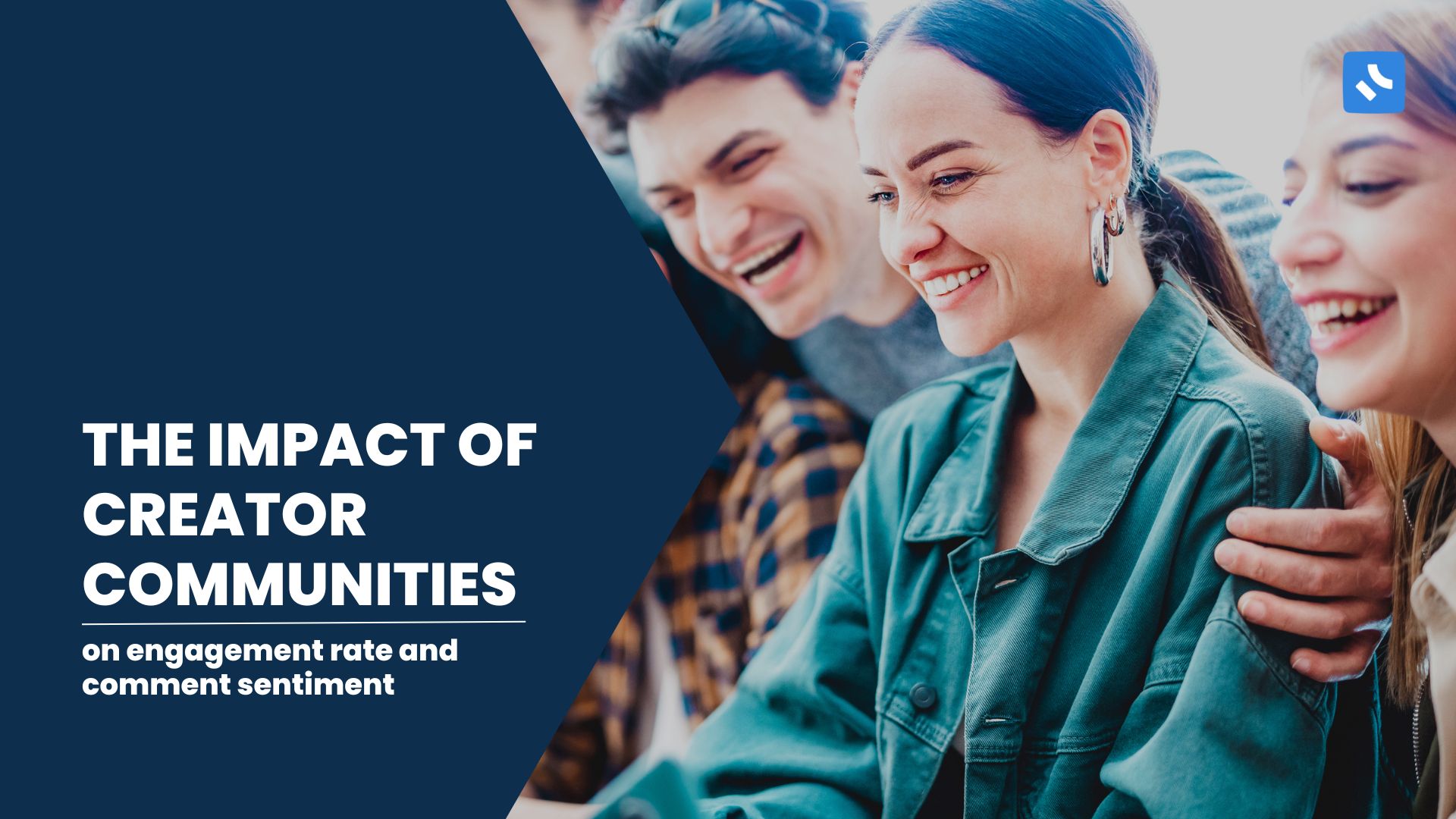The key to sustainable monetization for content creators is not in having a large audience, but in maintaining a deeply engaged community.
Loyal fans = Engagement = More income
Creators who have loyal fans easily influence purchasing decisions. This means their audience will be interested in buying products, interact with posts, and create a positive atmosphere among their followers overall.
This is one of the main reasons why brands who collaborate with creators with communities have better results from their campaigns.
So the real question isn’t whether a community is beneficial or not, but rather how important it is.
This report aims to specifically measure the creator community impact, rather than simply labeling it as good or bad.

How many creators build and maintain a community?
Community is a group of people who are united because they care about the same thing. They are started by a person or a company and what makes them special is not the number of people in it, but the interaction between them.
For this report, we took into consideration the following 15 community platforms:
Out of the 100k creators we analyzed, only 6% have established a community. From them:
- 26% use Discord
- 21% use Patreon
- 6-7% of creators use Kajabi and Thinkific, which shows a diversity beyond dominant platforms like Discord and Patreon.
In the graph below, you can see the percentage of creators that have a community, by platform.
Community impact on engagement
Engagement rate is a way to measure how much people are interacting with creator’s content, through likes and comments. High engagement rate indicates that a creator has a loyal audience.
How we measure the engagement rate:
- YouTube: (number of likes + number of comments) / views
- Instagram: (number of likes + number of comments) / followers
- TikTok: (number of likes + number of comments) / views
Creators with a community consistently achieve higher engagement rates across platforms.
In the graph below, you can see the average engagement rate based on creators’ primary platform. Be it Instagram, TikTok, or YouTube, you can see how that affects their engagement on other platforms.
How big is the difference, really?
If you look plainly at the numbers, these differences might not seem big. But if we look at the ratio between the engagement rate of creators with and without community, the difference is quite significant.
YouTube
YouTubers who have a community have an impressive average 30.9% engagement rate increase.
On Instagram, creators with a community see an average 38.3% increase of engagement rate.
TikTok
TikTokers with a community have an average increase of 20.8% in engagement rates.
In graph below, you can additionally see the increase of average engagement rate by the creators’ main platform.

Community impact on engagement
(by niche)
As a creator, choosing the niche and platform based on the insights below will have a positive impact on community-driven engagement and content strategy.
Similarly, businesses can identify the right platform for promoting their products or services and reach their target audience effectively.
For this report, we consider the 20 most prevalent niches across major platforms for creators.
Community impact on the engagement (by audience size)
Next, we analyzed the impact of having a community based on the creators’ audience size. We took into consideration two main things:
- Audience size
- Does the creator have a community
In the graph below, you can combine all these creator sizes with platforms and see how community affects the engagement rate based on the creator’s audience size.

In the graph below, you can see the average engagement rate by the creator’s size and niche.
Community impact on the comment sentiment
We discovered that having a community not only increases the engagement rate but also affects the types of comments a creator gets.
Here are the key takeaways from our analysis:
- Creators without a community receive 55.3% more negative comments compared to those with a community.
- Creators with a community receive 16.2% more positive comments compared to those without a community.

Methodology
The report analyzes data from 100k content creators across (YouTube, Instagram, TikTok)
The methodology involved several key steps:
Engagement rate analysis:
- Outlier Removal: We first eliminated outliers to ensure data accuracy. Outliers were identified based on engagement rates and the number of followers/subscribers. Creators with engagement rates exceeding certain thresholds were considered to have potentially inauthentic engagement. Similarly, those with very low followers or subscribers were excluded. The criteria for outlier removal were:
- YouTube: Creators with less than 5,000 subscribers or more than a 10% engagement rate.
- Instagram: Creators with less than 3,000 followers or more than a 10% engagement rate.
- TikTok: Creators with less than 5,000 followers or more than a 20% engagement rate.
- Main Platform Identification: For each creator, we determined their main platform of activity based on their audience size and activity.
- Community Presence: We evaluated whether each creator had established their community, based on external links associated with their profiles. In total, we identified 14 communities.
- Data Analysis: We then analyzed the data, focusing on aspects like niches, creator size, actual numbers, increment, etc.
- Interactive Graphs: The final step involved processing all this data into interactive graphs.
Comment Sentiment Analysis:
- Data Collection: We examined comments from a sample of 10,000 creators on each platform (YouTube, Instagram, TikTok). The breakdown was as follows:
- YouTube: 3000 creators with a community and 3000 without. We analyzed the last 10 videos of each creator, taking all comments up to a maximum of 300 per video.
- Instagram: 1,000 creators with a community and 1,000 without. We reviewed the last 10 posts of each creator, again taking all comments, or up to 300 per post.
- TikTok: Same approach as Instagram, with 1,000 creators from each category (with and without a community).
- Sentiment Analysis: We applied comment sentiment analysis to all collected comments, given the context of the video or the post.
- Graph: The results of the sentiment analysis were then processed into a graph.
Conclusion
When it comes to engagement on social media, many things affect how much people interact with the creator’s work.
Although it mostly depends on the type and quality of the content, chosen niche, the use of interactive parts, and hot topics to start a conversation, our study proves that the one thing that makes a positive difference is building and maintaining a community.
Having an engaged community is not just an addition to the creator’s success – but it is a significant factor that increases the impact and influence creators have.


